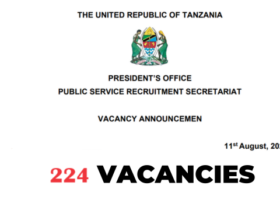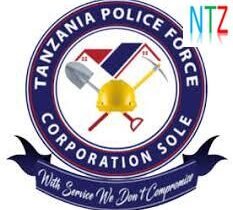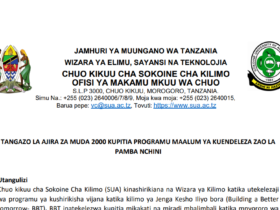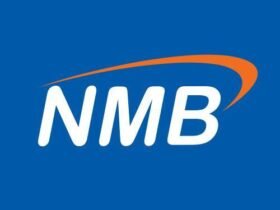Find here Matokeo ya Darasa la Saba 2024 (Standard Seven Results 2024 (PSLE-2024 EXAMINATION RESULTS)): All You Need to Know
“Matokeo ya Darasa la Saba 2024,” also known as the Standard Seven Results 2024 (PSLE-2024 EXAMINATION RESULTS), refers to the Primary School Leaving Test (PSLE) outcomes. This examination, administered by the National Examinations Council of Tanzania (NECTA), represents an important milestone for primary school students. After seven years of primary education, students take the PSLE to determine their eligibility for secondary education. This article covers essential information, from how to access the results to their importance and further steps for students and parents.
Understanding Matokeo ya Darasa la Saba
The Primary School Leaving Examination (PSLE), also called “Mtihani wa Darasa la Saba” in Swahili, is Tanzania’s national exam for primary school students in their seventh year. The results of this examination have a significant impact on students’ academic futures, determining whether they proceed to secondary education and which secondary schools they may attend.
Importance of the PSLE in Tanzania
The PSLE is a key educational assessment in Tanzania, serving as:
- An academic milestone for primary school students, validating their education from Grade 1 to Grade 7.
- A requirement for secondary education placement. Only students who pass the PSLE can proceed to secondary school.
- An indicator of educational quality, helping authorities gauge the effectiveness of primary education across regions and schools.
How to Check the Standard Seven Results 2024 (PSLE-2024 EXAMINATION RESULTS)
NECTA releases the results online to ensure accessibility and convenience for students and their families. Here are the main ways to check the results:
1. NECTA Official Website
Students and parents can visit the NECTA website for the official publication of the results. The steps are as follows:
- Go to the NECTA website.
- Navigate to the results section.
- Select the “PSLE” or “Matokeo ya Darasa la Saba” results for 2024.
- Enter the student’s details (index number) to access the results.
2. SMS Service
For areas with limited internet access, NECTA offers an SMS service to check results. Parents can send the student’s index number to a specified NECTA code to receive the results via SMS. Instructions on how to use this service are usually available on the NECTA website.
3. School Notice Boards
Schools often post the results on their notice boards for students and parents who prefer to access the results locally. This is especially helpful for those in rural or remote areas.
What to Do After Receiving the Results
Once the Standard Seven Results 2024 (PSLE-2024 EXAMINATION RESULTS) are out, students and their families should take the following steps:
1. Evaluate the Results Carefully
It’s important to analyze the results thoroughly, considering the performance in each subject to understand the student’s strengths and areas needing improvement. This information is valuable whether the student is advancing to secondary school or repeating the year.
2. Prepare for Secondary School (If Eligible)
Students who pass the PSLE will be eligible for secondary school enrollment. It’s crucial to start preparing for this transition by:
- Reviewing secondary school options and requirements.
- Gathering necessary enrollment documents.
- Planning for any logistical needs, such as uniforms, supplies, and potential boarding arrangements.
3. Consider Alternative Learning Paths
For students who did not achieve the required pass marks, options are still available. Repeating Standard Seven is one possibility, allowing students a second chance to improve their scores. Alternatively, students can explore vocational training programs that provide practical skills for various careers.
Trends in Standard Seven Results for 2024
Each year, PSLE results provide insights into the state of primary education in Tanzania. Some trends to consider in the 2024 results include:
- Pass Rate: Tracking the overall pass rate helps understand the progress in educational quality across the country.
- Regional Performance: Variations in performance by region reveal disparities and guide resource allocation to improve educational equity.
- Gender Comparison: Observing the performance gap between male and female students highlights areas for promoting gender equality in education.
- Subject-Specific Performance: Monitoring which subjects students generally excel in or struggle with informs curriculum improvements.








Leave a Reply